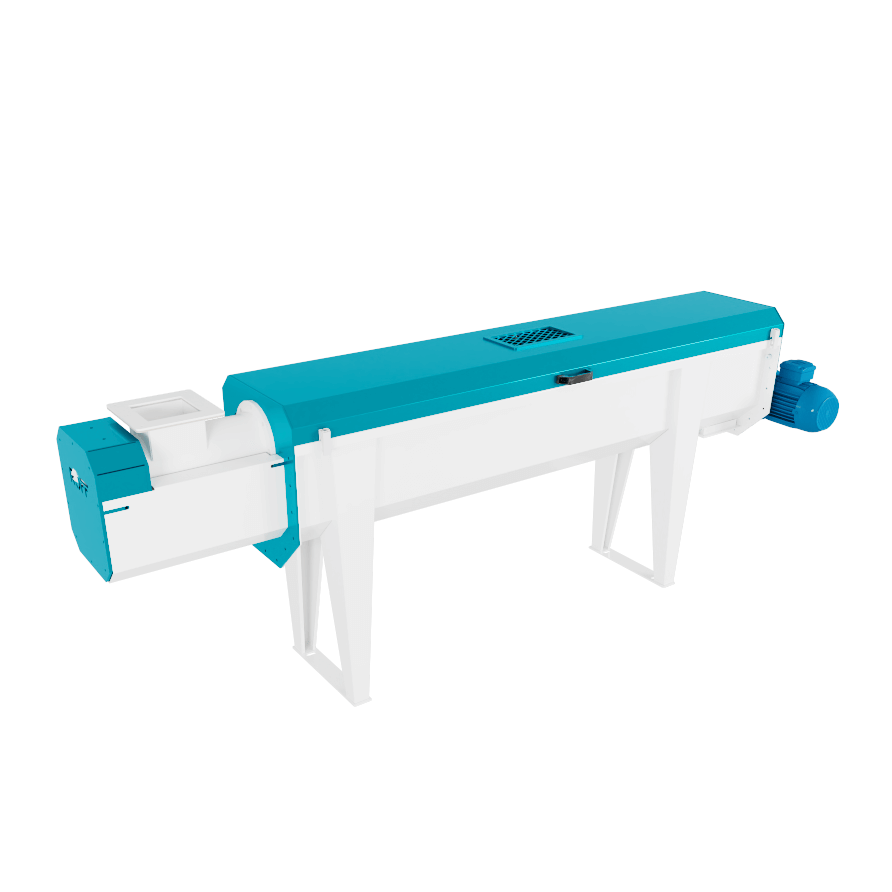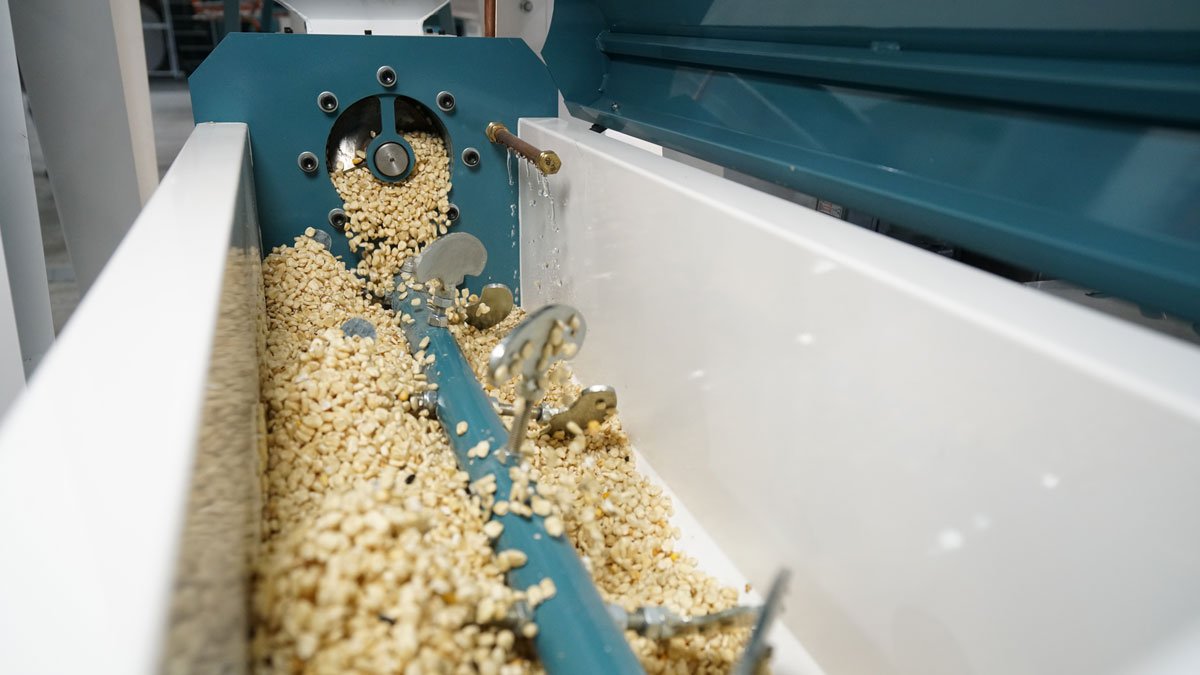In our second instalment about the importance of maize conditioning, the final stage in the preparation of maize before milling, we look at equipment used during the conditioning process. A calculation to determine how much water to add to the first conditioning stage is also shared.
Read The importance of maize conditioning, part 1 here.
EQUIPMENT USED IN CONDITIONING
It’s important to view the conditioning process as one where maize and water should be continuously mixed in very accurate measures. Should the stream of maize or water vary at any stage, the moisture content of the maize will vary, which will cause the degerminator and roller mill functioning to constantly change as the maize with variable moisture content reaches the machine.
On a larger process, a flow detector can be used to stop the grain when the above happens.
Grain flow control
It’s important to achieve a constant feed rate of grain, if the quantity of water added is to be constant. This will ensure that there are no variations in the conditioned moisture of the maize onto the mill. A constant grain flow can only be achieved by a mechanical device such as a flow balancer or screw. A slide under a bin can never achieve a constant flow of grain.
Water flow controlFor the same reason that the grain flow is controlled, it is also important that the water flow is consistent.
A Rotameter, connected to a pump that start and stop with the mechanical device that determine the grain flow, is a simple type of water flow control unit. The Rotameter consists of a graduated glass measuring cylinder which contains a metal float. Water enters from underneath and lifts the weight to a height related to the water pressure; this is indicative of the rate of flow of the water.
There are a number of more sophisticated water flow units available; anything that will ensure a constant amount of water will work fine.
The dampening conveyor
Several types of conveyors have been designed to ensure that the maize and water are thoroughly mixed so that each kernel comes into contact with the water.

The main points in the design of a proper conditioning conveyor are:
- The length of the conveyor must allow for proper mixing of water and grains. This will ensure that all the water is absorbed by the maize kernels.
- The type of conveyor blades should be of such design to ensure a mixing motion with the grain.
The conditioning bins
The main points in the design of a conditioning bin are:
- The bin(s) capacity must be able to hold enough maize to ensure that the correct lying times are achieved.
- The bin must be fitted with high and low level probes to keep the time constant of the grain in the bin.
- The bins must be equipped with a multi spout outlet or other device to ensure that the principle of first in, first out of the conditioned maize is maintained.
Note: Avoid leaving conditioned maize in the bins over weekends when the mill is not running. The reason is that the bran dries out and when the maize is milled, specks caused by the tip cap and the dried out bran will occur in the meal. Also, the degerminator will not be able to remove all of the bran and germ from the endosperm resulting in a high oil and fibre content in the finished product.

CALCULATION TO DETERMINE HOW MUCH WATER TO ADD IN FIRST CONDITIONING
Maize meal should be bagged at a maximum moisture content of 14%. In areas with a high humidity and temperature, this figure should be lowered. If the moisture content of the maize meal is higher than 14%, the shelf lifetime of the maize meal will drastically be reduced. The mill will run the risk of product going bad, which might damage the mill’s reputation with clients or the end-user.
Decide on a Target Moisture Value of what the grain should be when it enters the first processing stage (degerminator, or in the absence thereof, the first roller). This Target Moisture Value should be higher than 14%, which is the final product moisture value, since we can make provision for evaporation in the milling process. If a mill like the Roff C-80 that utilises Pneumatic conveying is used, then the rule of thumb Target Moisture Value is 15.5%. In a gravity mill like the Roff R-70 where no Pneumatic lifts are used, a lower Target Moisture Value should be used – a value of 14.5% is normally a good start.
Process to follow in a mill that uses Pneumatic lifts:
- Measure the moisture content of the dry grain with a good quality moisture meter;
- Measure the stream of maize at the watering point in kilograms per hour (kg/h);
- Use the Target Moisture Value of 15.5% as a starting point;
- Determine the amount of water in litre per hour (l/h);
- Measure moisture content of the maize meal and readjust the Target Moisture Value if necessary.
Example of calculation
- Dry grain moisture content is 11%
- Flow rate of dry grain is 1 000kg/h
- Target Moisture Value is 15.5%
Where: Q = the maize mass flow rate in kg per hour (1 000 kg)
M1 = the dry maize moisture (11%)
M2 = the Target Moisture Value (15.5%)
100 is a constant.
= 1 000 x (15.5 – 11)
(100- 15.5)
= 1 000 x 4.5
84.5
= 53.2 / water or 53.2 litres/hour water.
Note: 1 litre of water has a mass of 1 kilogram.
Read The importance of maize conditioning: Part 1, explaining why conditioning plays an important role in ensuring high quality end product. We also cover factors influencing water absorption and conditioning stages.







3 comments
This was very helpful
Very helpful
———
Roff Milling replied:
Thank you Bernard, if we can assist with anything more, do not hesitate to contact us.
Good note